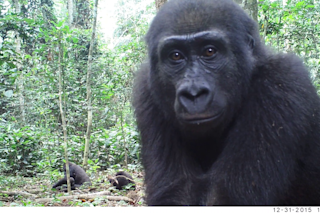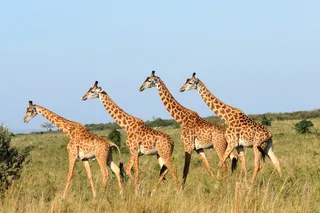Western gorillas are notoriously difficult to study. They live among dense rainforest, and habituating them to humans can take five years, says Robin Morrison, an anthropologist with the Dian Fossey Gorilla Fund.
“I can count the number of habituated [western gorilla] groups in the world on one hand,” she says. So to get a close look at how they interact with one another, Morrison and her team used some inconspicuous surrogates for human eyes: high-definition cameras.
What they saw contradicted some beliefs about how these massive primates use space and interact with others. Though previous researchers assumed that western gorillas aren’t territorial, Morrison and her team found the opposite is true — they just display protective behavior differently than other wild primates. In a study published Wednesday in the journal Scientific Reports, Morrison and her co-authors explain that recorded western gorillas groups aggressively defend central areas of their home turf. ...














